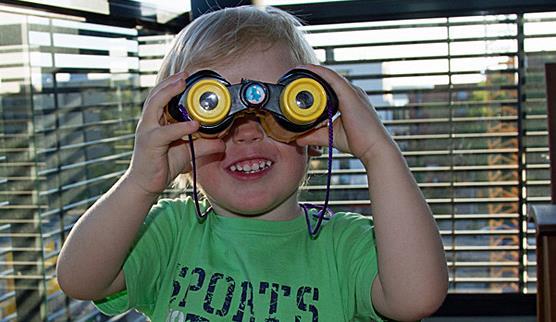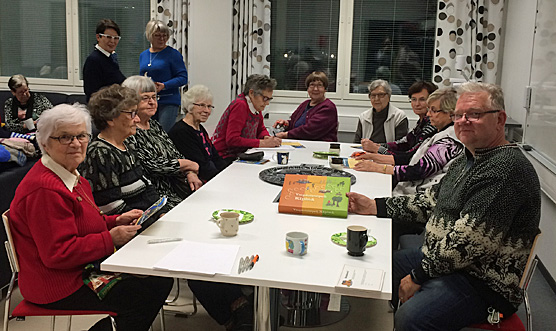
© Olli-Pekka Pietiläinen
What makes the residents of the tiny municipality of Ii reduce the energy consumption of their homes, switch the village hall over to geothermal heat and inspire the schoolchildren in the municipality to solve the energy challenges in their schools? In the municipality of Ii, the residents are the heroes of climate work.
The municipality of Ii in North Ostrobothnia, population 9,800, is a small miracle of climate and energy work. The municipality has already been investing in large-scale renewable energy systems, such as wind power, for a long time. In recent years, there has been a strong effort to work together with the residents of Ii at the grassroots level.
Schoolchildren as energy saving pioneers
An excellent example of climate activities as a part of everyday life is the 50/50 activities at the schools in Ii, which includes all schools and day care centres of the municipality. In their own school buildings, the pupils carry out various kinds of energy consumption measurements, such as the use of lighting and the consumption of water. The pupils also develop and implement measures to reduce energy consumption as a part of everyday life at school.
Every school has chosen energy agents among the pupils, who make sure that everyone participates in the work. One half of the saved energy costs in euros is returned for the use of each school. Last year, a total of 16,000 euros were returned to the schools in Ii, and the pupils were able to use the funds to purchase an outdoor billiards table or board games, for example.
“The energy work did not stop when the project ended; instead, it has become an integral part of the activities and teaching at the schools,” says Kari Manninen from Iilaakso Oy.
Energy literacy for households
Manninen has been involved in creating ideas for and implementing several energy experiments in the municipality, such as the ‘Iisisti energinen’ (Easy energy) project, in which around ten households in Ii were able to get energy saving systems inexpensively for their home. The families learned to map the energy loss points in their everyday lives and make decisions to save energy.
“The survey conducted during the project showed that the energy literacy of the households had improved and their energy consumption habits had changed. Perhaps as a bit of surprise, the comfort of living and environmental issues came up equally strongly in the residents’ answers. Energy saving systems make it possible to adjust the temperature more precisely and according to what is needed at the time, for instance,” Manninen says.
Power from chat groups
The aim of the ‘Iisisti energinen’ (Easy energy) project was to reach as many residents of the municipality as possible face to face in energy issues.
“We started by organising traditional energy clinics, but we soon noticed that it wasn’t easy to get people to come there. We decided to go where people would be meeting anyway – such as the meetings of the Martha Organisation and the neighbourhood associations. We encouraged people to participate in a light-hearted quiz and talked about energy issues in ‘chat groups,’” Manninen says. “I believe we did something right, because the participants often stayed longer than planned.”
For example, the meetings provided information about possibilities of switching the heating at home to a system using renewable energy. Residents were given tailored advice and they were guided in how to move forward with the issue. Over the year, more than 1,000 municipal residents participated in the chat groups, which is more than ten per cent of the population of Ii.
Timo Haapaniemi from Ii is involved in the activities of the Iin Järjestöyhdistys association. He participated in the chat nights of the ‘Iisisti energinen’ (Easy energy) project, which lit the spark for the energy renovation of the property owned by the organisation.
“We switched the heating of our village hall from oil to geothermal heat at one go. We got advice and calculations as a basis for the project from the municipality, and we applied for a grant from the Finnish Local Heritage Federation. Extensive support and the tailored advice we received made the project a success,” Haapaniemi says.
Energy advice is also provided for joint purchases of composters and solar power plants, which have been carried out in Ii and the neighbouring municipalities for several years.
“Last year, about twenty solar power plants were purchased, most of which were projects by private citizens. We expect this year’s purchase to be at least as popular. Interest in a solar power plant built on a turnkey basis has spread, especially in the neighbourhoods, in which power plants have already been installed,” says Manninen.

Meeting of the Martha Organisation © Ii municipality
Excitement spreads from one village to another
The best practices for energy work by citizens from Ii are continued, refined and shared with the neighbouring municipalities of Muhos, Pyhäjärvi and Tyrnävä in the Canemure project. The idea is that the municipality helps the residents to start the energy activities. The project promotes the introduction of low-carbon solutions by consumers in mobility, housing, eating, waste management, services and consumption choices.
“The role of the municipal Iilaakso company is to encourage others and tell about our own experiences, but we are also happy to hear about the experiences of other municipalities. Everyone can implement energy work in their own way, and no municipality starts at zero,” Manninen says.
“It’s important that all residents of Ii have had the opportunity to participate and express their opinion. We have noticed that when energy work is implemented wisely, you can also achieve financial savings,” Manninen says. “The secret of the municipality of Ii is definitely cooperation and creating a community spirit. New ideas spread from village to village, from town to town. We are solving a global problem from a local perspective.”
More information
Energy expert Kari Manninen, Iilaakso Oy
kari.manninen@iilaakso.fi